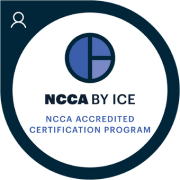EMS 2020 LLSA Reading List
Airway Management
Jarvis JL, Gonzales J, Johns D, Sager L. Implementation of a clinical bundle to reduce out-of-hospital peri-intubation hypoxia. Ann Emerg Med 2018 Sep;72(3):272-9.
- The key elements of the intubation bundle studied by Jarvis et al., are the head-up sniffing position, apneic oxygenation, ___________________, and ___________________.
EMS Provider Wellness
Patterson PD, Higgins JS, Van Dongen HPA, Buysse DJ, Thackery RW, Kupas DF, et al. Evidence-based guidelines for fatigue risk management in emergency medical services. Prehosp Emerg Care 2018 Feb;22(sup1):89-101.
- The evidence-based guidelines on fatigue management recommends that duty shifts should be less than ___________________ in duration.
Management of Opioid Overdose
Klebacher R, Harris MI, Ariyaprakai N, Tagore A, Robbins V, Dudley LS, et al. Incidence of naloxone redosing in the age of the new opioid epidemic. Prehosp Emerg Care Nov-Dec 2017;21(6):682-7.
- Among patients treated with intranasal naloxone by first responders or EMS for opioid-induced respiratory depression, ___________________% required more than one dose for adequate reversal.
Prehospital Cardiac Arrest Management
Benger JR, Kirby K, Black S, Brett SJ, Clout M, Lazaroo MJ, et al. Effect of a strategy of a supraglottic airway device vs tracheal intubation during out-of-hospital cardiac arrest on functional outcome: The AIRWAYS-2 randomized clinical trial. JAMA 2018 Aug;320(8):779-91.
- In this pragmatic randomized trial of airway management strategies during cardiac arrest, use of supraglottic airway compared to endotracheal intubation was found to have ___________________ in functional outcome.
PARAMEDIC2 Collaborators. A randomized trial of epinephrine in out-of-hospital cardiac arrest. N Engl J Med 2018 Aug;379(8):711-21.
- Patients in cardiac arrest who received epinephrine as compared to those who received placebo during resuscitation had a ___________________ rate of survival at 30 days.
Wang HE, Schmicker RH, Daya MR, Stephens SW, Idris AH, Carlson JN, et al. Effect of a strategy of initial laryngeal tube insertion vs endotracheal intubation on 72-hour survival in adults with out-of-hospital cardiac arrest: A randomized clinical trial. JAMA 2018 Aug;320(8):769-78.
- The primary outcome in this pragmatic, cluster-crossover clinical trial comparing initial use of a supraglottic airway to endotracheal intubation for airway management of patients in cardiac arrest was ___________________.
Prehospital Cardiac Care
Bosson N, Sanko S, Stickney RE, Niemann J, French WJ, Jollis JG, et al. Causes of prehospital misinterpretations of ST elevation myocardial infarction. Prehosp Emerg Care 2017 May-Jun;21(3):283-90.
- The most common causes of false positive STEMI automated device interpretations were ___________________ and ___________________.
Prehospital Management of Traumatic Brain Injury
Kupas DF, Melnychuk EM, Young AJ. Glasgow coma scale motor component (“patient does not follow commands”) performs similarly to total glasgow coma scale in predicting severe injury in trauma patients. Ann Emerg Med Dec 2016:68(6):744-50.
- When emergency physicians’ interrater agreement on level of consciousness was studied, there was significantly more agreement on ___________________ than ___________________
Sacramento County Prehospital Research Consortium. Out-of-hospital triage of older adults with head injury: a retrospective study of the effect of adding “anticoagulation or antiplatelet medication use” as a criterion. Ann Emerg Med 2017 Aug;70(2):127-38.
- ___________________ percent of geriatric trauma patients who did not meet anatomic, physiologic, or mechanistic criteria for trauma system entry used anticoagulant or antiplatelet agents.
Spaite DW, Hu C, Bobrow BJ, Chikani V, Barnhart B, Gaither JB, et al. The effect of combined out-of-hospital hypotension and hypoxia on mortality in major traumatic brain injury. Ann Emerg Med 2017 Jan;69(1):62-72.
- The effect of combined out-of-hospital hypotension and hypoxia on mortality of major traumatic brain injury patients appears to be ___________________.
Remick K, Redgate C, Ostermayer D, Kaji AH, Gausche-Hill M. Prehospital glucose testing for children with seizures: A proposed change in management. Prehosp Emerg Care 2017 Mar-Apr;21(2):216-21.
- Hypoglycemia occurred in ___________________% of all pediatric seizure patients with a prehospital glucose measurement.
Prehospital Trauma Care
Fischer PE, Perina DG, Delbridge TR, Fallat ME, Salomone JP, Dodd J, et al. Spinal motion restriction in the trauma patient – A joint position statement. Prehosp Emerg Care 2018 Nov-Dec;22(6):659-61
- Spinal motion restriction may be achieved by securing a patient to a backboard or a ___________________.
PAMPer Study Group. Prehospital plasma during air medical transport in trauma patients at risk for hemorrhagic shock. N Engl J Med 2018 Jul;379(4):315-26.
- Initiation of 2 units of thawed plasma occurred in the experimental group ___________________ they received any standard resuscitation fluids.
Smith ER, Shapiro G, Sarani B. The profile of wounding in civilian public mass shooting fatalities. J Trauma Acute Care Surg 2016 Jul;81(1):86-92.
- Only ___________________% of the fatalities in civilian public mass shootings had a potentially survivable wound.
Click to see all answers
- The key elements of the intubation bundle studied by Jarvis et al., are the head-up sniffing position, apneic oxygenation, delayed sequence intubation, and goal-directed preoxygenation.
- The evidence-based guidelines on fatigue management recommends that duty shifts should be less than 24 hours in duration.
- Among patients treated with intranasal naloxone by first responders or EMS for opioid-induced respiratory depression, 9% required more than one dose for adequate reversal.
- In this pragmatic randomized trial of airway management strategies during cardiac arrest, use of supraglottic airway compared to endotracheal intubation was found to have no difference in functional outcome.
- Patients in cardiac arrest who received epinephrine as compared to those who received placebo during resuscitation had a higher rate of survival at 30 days.
- The primary outcome in this pragmatic, cluster-crossover clinical trial comparing initial use of a supraglottic airway to endotracheal intubation for airway management of patients in cardiac arrest was 72-hour survival.
- The most common causes of false positive STEMI automated device interpretations were artifact and nonischemic conditions.
- When emergency physicians’ interrater agreement on level of consciousness was studied, there was significantly more agreement on GCS-moto than total GCS
- Thirty percent of geriatric trauma patients who did not meet anatomic, physiologic, or mechanistic criteria for trauma system entry used anticoagulant or antiplatelet agents.
- The effect of combined out-of-hospital hypotension and hypoxia on mortality of major traumatic brain injury patients appears to be additive.
- Hypoglycemia occurred in 0.5% of all pediatric seizure patients with a prehospital glucose measurement.
- Spinal motion restriction may be achieved by securing a patient to a backboard or a scoop stretcher, vacuum splint, or ambulance cot.
- Initiation of 2 units of thawed plasma occurred in the experimental group before they received any standard resuscitation fluids.
- Only 7% of the fatalities in civilian public mass shootings had a potentially survivable wound.



